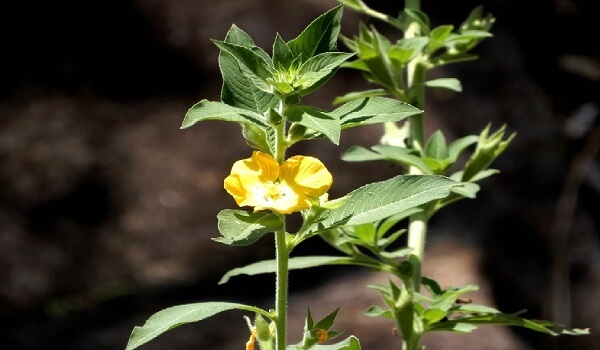An aquatic weed found in some countries of Central and South America, including Peru, is threatening elephant habitats and grazing areas in Valparai, a hill station in Tamil Nadu. Valparai is a hill station in Tamil Nadu close to the Kerala border. This aquatic weed, called Ludwigia peruviana, grows rapidly along the water body. It was probably introduced to India as an ornamental plant for its small yellow flowers.
Ludwigia peruviana
- Ludwigia Peruviana, also known as primrose willow, is originally native to Central and South America.
- It is an aquatic plant that was likely introduced as an ornamental species due to its attractive pale yellowish flowers.
- However, its introduction to new regions has resulted in it becoming an invasive weed, causing ecological disruptions in various swampy areas worldwide.
Characteristics
- Ludwigia Peruviana grows relatively tall, reaching a height of about 12 feet.
- As an aquatic plant, it thrives in wetlands and water bodies.
- It grows faster than many other harmful weeds, and the pre-monsoon temperature and monsoon rains contribute to its rapid growth and spread.
- Impact on Elephants and Wildlife and Biodiversity:
- The invasion of Ludwigia Peruviana poses a significant threat to elephant habitats, disrupting the growth of essential food sources for elephants and other plant-eating animals.
- The spread of this invasive weed also impacts the overall biodiversity of invaded areas, leading to the loss of native plant species and potentially forcing wildlife to move to other areas, resulting in negative interactions with humans.
Challenges in Prevention
- Ludwigia Peruviana is listed as one of the 22 priority invasive plants in Tamil Nadu, emphasizing the urgency of containment and control measures.
- The elimination of Ludwigia presents a unique challenge compared to other invasive plants because it grows in swamps, limiting the use of machinery to tackle the problem without damaging the ecosystem further.
- Manual removal is tricky because the plant breaks easily and new growth can emerge from root or broken stems.
- Hand-pulling and digging roots can be effective.

